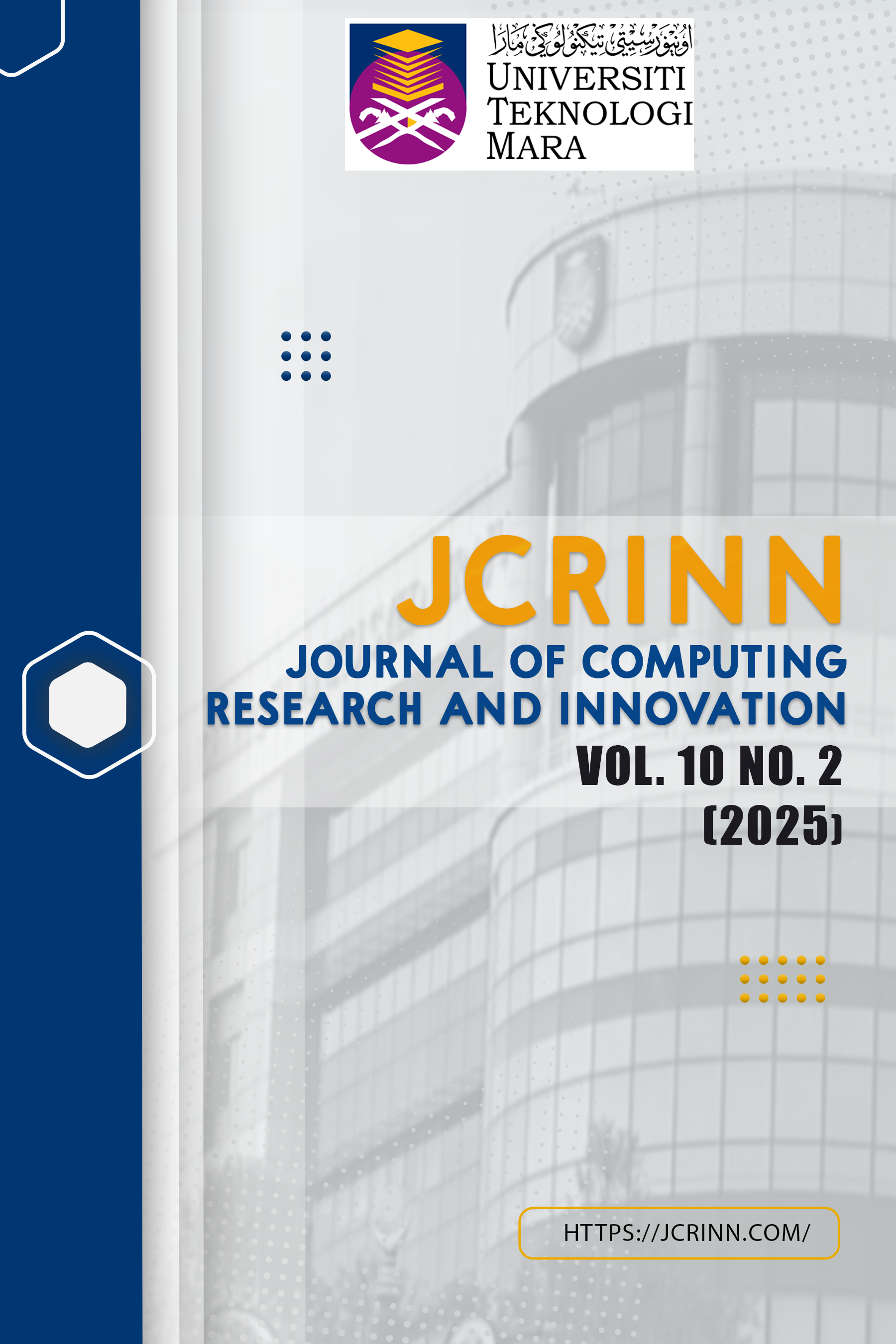User Acceptance Testing of the ‘Furwish’ Location-Based Mobile Application: An Empirical Study on Pet Adoption and Surrender Services
DOI:
https://doi.org/10.24191/jcrinn.v10i2.552Keywords:
Pet Adoption, Pet Surrender, Animal Welfare, Location Aware, Mobile ApplicationAbstract
The increasing number of stray animals demands an effective way to connect pet owners who intend to surrender their pet with potential pet adopters. The manual approach to pet surrender and adoption often faced many challenges, such as limited outreach, communication, and options for the adopters. Unadopted pets may lead to an increasing number of stray animals and cause disturbance in residential areas. In this paper, we present a more detailed discussion on the development and evaluation of a location-aware mobile application named FurWish. The mobile application allows users to post information about their pet for listings, location-aware pet searches, setting up appointments for adoption, and notifications. The development adapted a three-phase methodology from Waterfall Model which includes requirement identification, design and development, and evaluation. Requirement identification involved reviews of literature and existing mobile apps. In the design phase the user interface design is drafted using diagrams and sketches, and the development phase involved implementation using Android Studio and Firebase with the integration of Google Location Services for displaying maps. In the evaluation phase, a user acceptance test (UAT) is conducted to test four key aspects, which are Attitude Towards Using (ATT), Behavioural Intention to Use (BI), Perceived Usefulness (PU) and Perceived Ease of Use (PEU). 33 respondents were given 12 questions after they had explored and used the functions and features of the mobile application. Results from UAT show FurWish has achieved high scores over four key aspects, with the highest score achieved under PU. This shows the user's acceptance of its effectiveness in supporting the pet adoption and surrender process while supporting animal welfare.
Downloads
References
Abdulkarim, A., Goriman Khan, M. A. K. B., & Aklilu, E. (2021). Stray animal population control: Methods, public health concern, ethics, and animal welfare issues. World’s Veterinary Journal, 11(3), 319–326. https://doi.org/10.54203/scil.2021.wvj44
Akhigbe, B. I., Ososanya, O. J., & Olajubu, E. A. (2022). A mobile based pharmacy store location-aware system. Journal of Information and Organizational Sciences, 46(1), 213–236. https://doi.org/10.31341/jios.46.1.12
Bhadane, D., Khirude, P., Chavan, O., & Lokare, A. (2023). Pet adoption system using web technology. International Journal of Scientific Research in Engineering and Management (IJSREM), 07(05). https://doi.org/10.55041/IJSREM22826
Chur-Hansen, A., Winefield, H., & Beckwith, M. (2008). Reasons given by elderly men and women for not owning a pet, and the implications for clinical practice and research. Journal of Health Psychology, 13(8), 988–995. https://doi.org/10.1177/1359105308097961
Corsetti, S., Natoli, E., & Malandrucco, L. (2025). The dark side of the moon: A good adoption rate conceals the unsolved ethical problem of never-adopted dogs. Animals: an Open Access Journal from MDPI, 15(5), 670. https://doi.org/10.3390/ani15050670
Friendsapp Listing. (2023). Pets Adoption - Adopt a Pet [Mobile App]. App Store. https://apps.apple.com/ph/app/pets-adoption-adopt-a-pet/id6450016352
Holland, K. E. (2019). Acquiring a Pet Dog: A review of factors affecting the decision-making of prospective dog owners. Animals, 9(4), 124. https://doi.org/10.3390/ani9040124
In Sequence Software LLC. (2022). Pet Adopter: Adopt pets [Mobile App]. App Store. https://apps.apple.com/my/app/pet-adopter-adopt-pets/id1268661502
Khan, R. A. H., Gopal, P. R., Yogesh, P. B., Nitin, P. V., Sahebrao, K. S., Sharad, P. N., & Santosh, P. V. (2024). The waterfall model-software engineering. International Journal of Research Publication and Reviews, 5(4), 7825-7830. https://ijrpr.com/uploads/V5ISSUE4/IJRPR25788.pdf
Martins, C. F., Soares, J. P., Cortinhas, A., Silva, L., Cardoso, L., Pires, M. A., & Mota, M. P. (2023). Pet’s influence on humans’ daily physical activity and mental health: A meta-analysis. Frontiers in Public Health, 11, 1196199. https://doi.org/10.3389/fpubh.2023.1196199
Matković, P., & Tumbas, P. (2010). A comparative overview of the evolution of software development models. International Journal of Industrial Engineering and Management, 1(4), 163–172. https://doi.org/10.24867/IJIEM-2010-4-019
Mazlan, M. U., & Jamaluddin, M. N. F. (2025). FurWish: Location-aware pet adoption mobile application. In Proceedings of the Undergraduate Computer Sciences Colloquium 2025 (pp. 35–36).
Md Isa, Y. B., Hilal Md Dahlan, N., Ezura, E., & Nisha Khirul Anuar, K. (2024). E-hailing services in Malaysia: A snapshot of legal issues and risks. UCJC Business and Society Review (Formerly Known as Universia Business Review), 21(80). https://doi.org/10.3232/UBR.2024.V21.N1.15
Meier, C., & Maurer, J. (2022). Buddy or burden? Patterns, perceptions, and experiences of pet ownership among older adults in Switzerland. European Journal of Ageing, 19(4), 1201–1212. https://doi.org/10.1007/s10433-022-00696-0
Nord, J., Synnes, K., & Parnes, P. (2002). An architecture for location aware applications. In Proceedings of the 35th Annual Hawaii International Conference on System Sciences (pp. 3805–3810). IEEE. https://doi.org/10.1109/HICSS.2002.994513
PAWS Malaysia. (2025). Paws Animal Welfare Society (PAWS) [Computer software]. https://www.paws.org.my/
PetRehomer. (2025). Home PetRehomer. PetRehomer. https://petrehomer.org/
Royce, D. W. W. (1970). Managing the development of large software systems. In Proceedings of the 9th International Conference on Software Engineering (pp. 328-338).
Schmidtke, H. R. (2020). Location-aware systems or location-based services: A survey with applications to CoViD-19 contact tracking. Journal of Reliable Intelligent Environments, 6(4), 191–214. https://doi.org/10.1007/s40860-020-00111-4
St. Hubert’s Animal Welfare Center. (2025, March 5). St. Hubert’s Animal Welfare Center. St. Hubert’s Animal Welfare Center. https://www.sthuberts.org
Yan, E. X., Md Jusoh, Z., Zainudin, N., & Osman, S. (2024). determinants of e-hailing service adoption among university students in Peninsular Malaysia. International Journal of Academic Research in Business and Social Sciences, 14(10), 1783-1803. https://doi.org/10.6007/IJARBSS/v14-i10/23281
Zhao, Y., & Bacao, F. (2020). What factors determining customer continuingly using food delivery apps during 2019 novel coronavirus pandemic period?. International Journal of Hospitality Management, 91, 102683. https://doi.org/10.1016/j.ijhm.2020.102683
Downloads
Published
How to Cite
Issue
Section
License
Copyright (c) 2025 Marnie Umirah Mazlan, Muhammad Nabil Fikri Jamaluddin, Iman Hazwam Abd Halim, Alif Faisal Ibrahim, Mohd Faris Mohd Fuzi (Author)

This work is licensed under a Creative Commons Attribution 4.0 International License.




